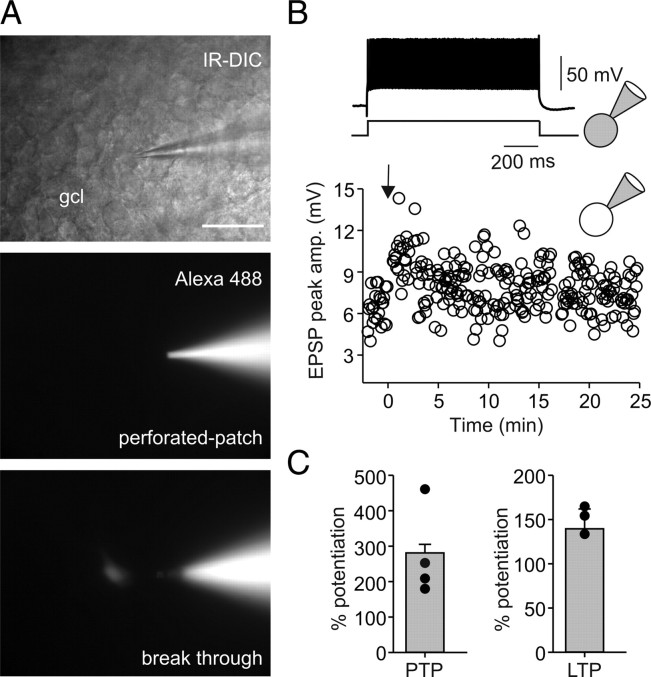Figure 7.
Gramicidin perforated-patch recordings reveal that Hebbian associative LTP persist at mossy fiber–perisomatic inhibitory interneuron synapses with intact internal milieu. A, Top, IR-DIC image of a perforated-patch recording from a fast-spiking (B, inset) PII with soma in the gcl. Middle, Epifluorescence image of the same neuron during recording to monitor stability of the perforated patch. Alexa Fluor 488 (50 μm) was added to the pipette solution. Note that the fluorescence signal is restricted to the pipette indicating integrity of the perforated-patch. Bottom image, Spontaneous breakthrough is indicated by labeling of the cell body. B, A BFS protocol applied to MF input in association with depolarization in the postsynaptic PII (see Materials and Methods) at t = 0 ms (arrow) evokes stable LTP in the perforated-patch configuration. EPSP peak amplitude is plotted against time before and after the BFS. Inset on top, At the end of the LTP recording, the same cell was repatched to show its fast-spiking, nonadapting action potential phenotype (adaptation ratio, 0.81) during long-lasting depolarizing current injections (600 pA; 1 s). C, Comparison of PTP and LTP in four perforated-patch recorded PIIs. The bars represent mean ± SEM. The circles represent single data points.

